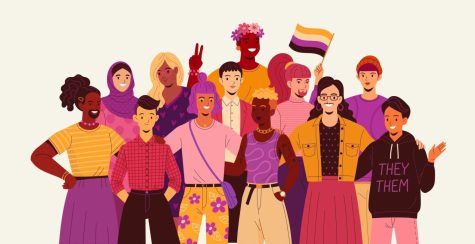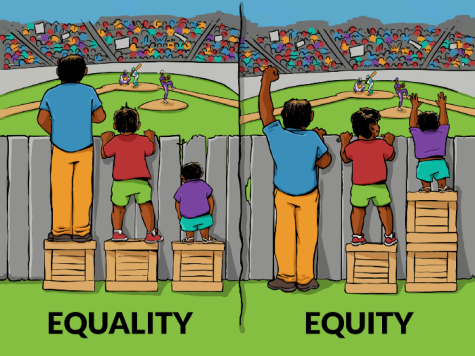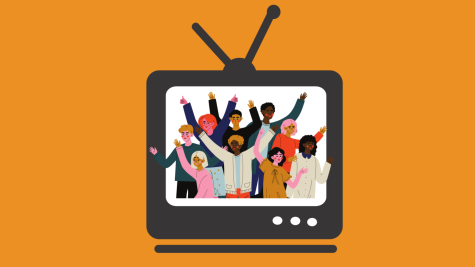Liberty and Justice For All: The important distinctions around “seeing color”

Refusing to see race through colorblind ideologies perpetuates the discrimination present in society today
The goal of “Liberty and Justice for All” is to create thoughtful dialogue around important issues in our society. With that goal in mind, the column will occasionally host guest writers, who will be able to provide different perspectives on issues that are important to them. This week, Eastside Global Commentary Editor Lauren Winslow (‘23) shares her thoughts.
As Americans continue to discuss race and its effects on society, the topic of being colorblind, a practice in which race is not considered in decision making, versus color-aware has risen in prominence. In what was perceived as an effort to promote acceptance, some caucasian parents recently began to teach their children to be colorblind. However, many Black people have come out and said that color blindness will not solve problems, and may actually perpetuate ignorance. Refusing to see race ultimately ignores that there is discrimination present in the world. Instead, parents should be teaching their kids about the beauty of diversity, which in itself will advocate for acceptance.
Phrases such as “we don’t see color” or “I don’t believe in race” convey the idea that there are no differences between how white people and Black people are treated. Refusing to see these differences means that one most likely also refuses to see the discrimination and segregation against racial minorities that are present in society.
Former Supreme Court Justice Harry A. Blackmun believes that “in order to get beyond racism, one must first take race into account. There is no other way.”
When one chooses not to see race, they also actively make the choice not to acknowledge Jim Crow laws. They refuse to see the inadequate representation of minorities in the media. They refuse to accept the atrocities the United States has committed against minorities in the past and how segregation continues in the present.
Not seeing color does nothing to promote change in today’s society; identifying the ways minorities are mistreated because of their race does. For example, instead of addressing race’s effect on police brutality, those who choose not to see color take race out of the conversation.
Skin color undoubtedly has effects on how people are treated in society, as it has for decades. Teaching a generation not to see skin color is counterproductive to acknowledging the mistreatment of minorities. The only thing teaching people not to see color will do is create ignorance.
In fact, colorblind racial attitudes are classified under microinvalidations, which fall under the broader category of microaggressions. Microinvalidations are comments or behaviors that negate the feelings and experiences of people of color. Racial identity can be important to people of color, so refusing to see a part of their culture means ignoring a large part of who they are.
Activist and author Emmanuel Acho, in his podcast “Uncomfortable Conversations with a Black Man,” said, “it’s best that we raise our kids to see color because there’s a beauty in color and there’s a beauty in culture.” In this podcast, Acho explains that not being able to differentiate between a threat and a harmless human being is the result of not exposing young children to different colors and races.
Being color-conscious is not synonymous with being racist. Those who are color-conscious see race as a beautiful part of society and advocate for the acceptance of all. Those who are racist wield skin color like a weapon.
Imagine not being able to see the intricacies of life because you can not see without glasses. Refusing to wear glasses means you miss out on some of the best parts of life. The same could be said for being racially colorblind. When you refuse to see a certain aspect of life, you remain ignorant of its impact and beauty. The moment those glasses appear, the lack of understanding disappears, bringing clarity. Not seeing color takes away the different shades and hues of life that are so vital.
Instead of raising children to be colorblind, it is more important for parents to provide an adequate and equity-based education. While colorblind ideologies revolve around treating everyone as equal, it is equity society must strive for. Highlighting the uniqueness of others and learning about cultural differences will drive progress towards the creation of a more inclusive society, ultimately providing liberty and justice for all.

Lauren Winslow is a senior and is one of the Online Editor-In-Chiefs. She loves to be involved in school activities, so she plays basketball, sings in...










